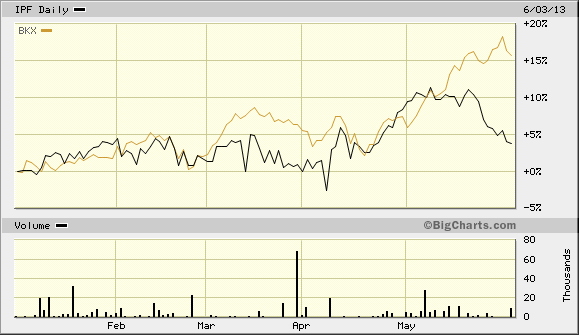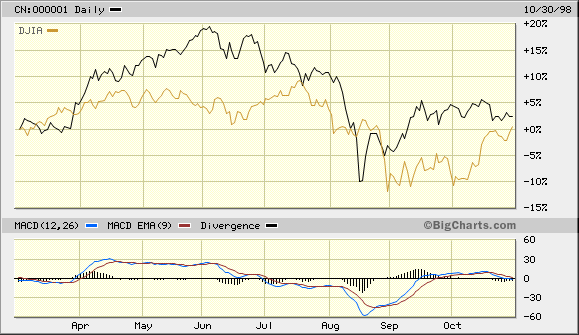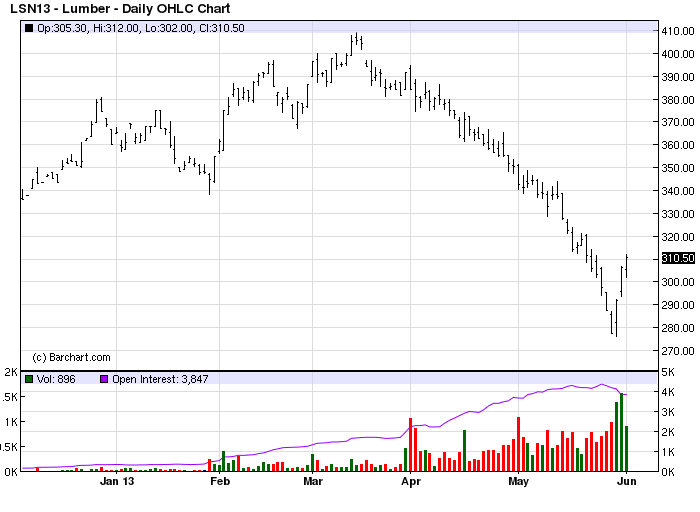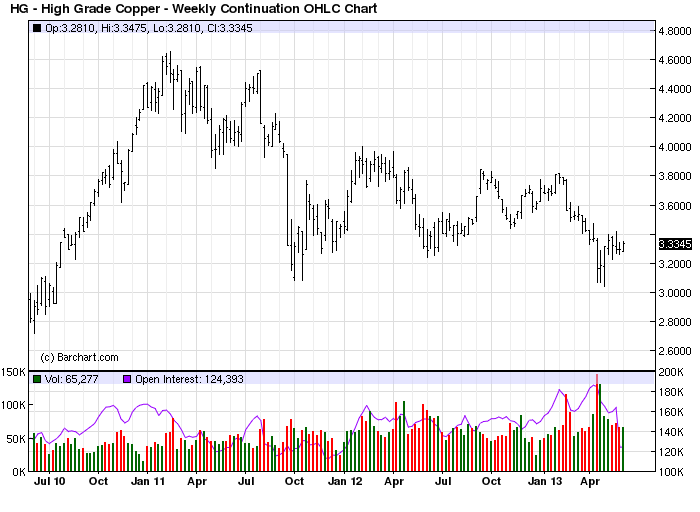A Summer Stock Market Crash Scenario
Stock-Markets / Financial Crash Jun 05, 2013 - 09:44 PM GMTBy: Clif_Droke

 Despite the recent weakness, the broad market has displayed a fair amount of resilience in the face of rising interest rates and falling commodity prices. The charts even leave us with some hope that there will be one more rally to new highs in the coming weeks. But a growing list of problems also suggests the market could be setting up for a repeat of the 1998 mini-crash later this summer.
Despite the recent weakness, the broad market has displayed a fair amount of resilience in the face of rising interest rates and falling commodity prices. The charts even leave us with some hope that there will be one more rally to new highs in the coming weeks. But a growing list of problems also suggests the market could be setting up for a repeat of the 1998 mini-crash later this summer.
There are several parallels between now and the spring and summer of 1998 which led to the July-October decline. The year 1998 was an exceptionally strong one for U.S. equities for the first half of the year; that year also witnessed a strengthening domestic economy. Like this year, however, 1998 saw trouble begin overseas with global weakness reflected by falling commodity prices.
Another point of concern for the market this summer is the global financial sector. While U.S. banks are doing well due to improving balance sheets, foreign banks are lagging. The comparison between the SPDR International Financial Sector ETF (IPF, black line) and the Philly Bank Index (BKX, yellow line) illustrates this point.

As go the banks, so goes the broad market is the old saying. This applies to foreign banks as well, for as we’ve experienced many times in the past, weakness in foreign markets sooner or later always spills over into U.S. equities, a’ la 1998.
The U.S. stock market sell-off of ’98 was also preceded by late spring weakness in the Chinese stock market. In June the Shanghai Composite Index topped out several weeks ahead of the Dow Jones Industrial Average and began a decline which continued until August. China’s stock market bottomed several weeks before the U.S. indices, once again affirming the leading indicator relationship that has typically existed between U.S. and Chinese equities.

This time around the China ETF (FXI) is showing exceptional weakness versus the Dow and S&P 500 indices. FXI has established a series of lower highs against the higher highs in the Dow and S&P. This could be warning of another coming period of weakness ahead later this summer.
Commodity price weakness was another thing that led to the late summer sell-off in 1998. Several major commodities, including oil and gold, were in declining heading into the summer of ’98 and the decline in commodities can’t be overestimated. Falling commodities prices are a sign of deflationary pressures, which in this case are being brought on by the 120-year cycle being in its final descending stage into 2014.
Low gold prices in particular are a sign that the market doesn’t have any inflation expectations for the economy in the foreseeable future. Moreover, with a highly touted housing market recovery underway it’s unusual to see lumber prices showing this much weakness (see chart below).

Copper prices are another important barometer of global economic health and right now copper is hovering near a two-year low.

In the 2013 forecast edition of the report published in early January we examined the Kress cycle “echoes” for this year. We specifically looked at the 6-year, 10-year, 30-year and 60-year patterns for stock prices for clues as to what the coming year might unfold. In each of the aforementioned “echo” years – 2007, 2003, 1983 and 1953 – stocks experienced a rocky period in the June-August period, with July and August being especially rough. This suggests that the coming July-August period could also be a rough one.
2014: America's Date With Destiny
Take a journey into the future with me as we discover what the future may unfold in the fateful period leading up to - and following - the 120-year cycle bottom in late 2014.
Picking up where I left off in my previous work, The Stock Market Cycles, I expand on the Kress cycle narrative and explain how the 120-year Mega cycle influences the market, the economy and other aspects of American life and culture. My latest book, 2014: America's Date With Destiny, examines the most vital issues facing America and the global economy in the 2-3 years ahead.
The new book explains that the credit crisis of 2008 was merely the prelude in an intensifying global credit storm. If the basis for my prediction continue true to form - namely the long-term Kress cycles - the worst part of the crisis lies ahead in the year 2014. The book is now available for sale at: http://www.clifdroke.com/books/destiny.html
Order today to receive your autographed copy and a FREE 1-month trial subscription to the Gold & Silver Stock Report newsletter.
By Clif Droke
www.clifdroke.com
Clif Droke is the editor of the daily Gold & Silver Stock Report. Published daily since 2002, the report provides forecasts and analysis of the leading gold, silver, uranium and energy stocks from a short-term technical standpoint. He is also the author of numerous books, including 'How to Read Chart Patterns for Greater Profits.' For more information visit www.clifdroke.com
Clif Droke Archive |
© 2005-2022 http://www.MarketOracle.co.uk - The Market Oracle is a FREE Daily Financial Markets Analysis & Forecasting online publication.


